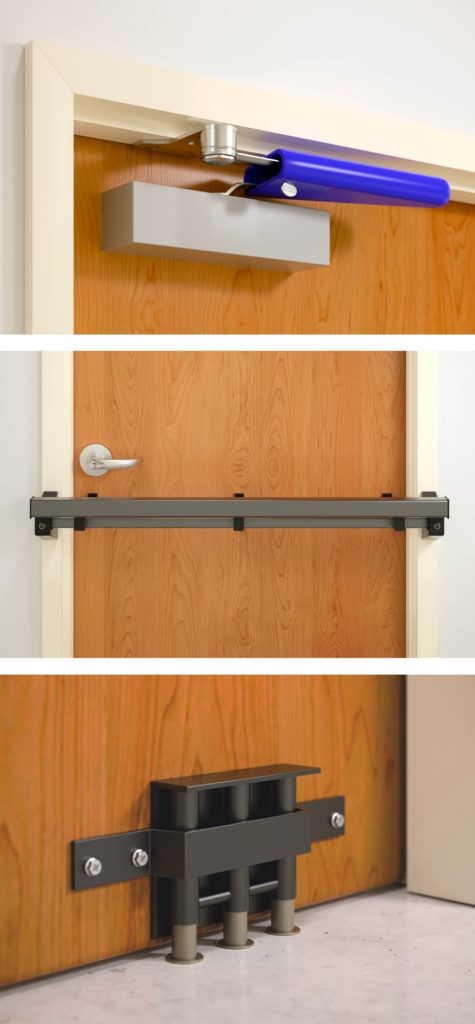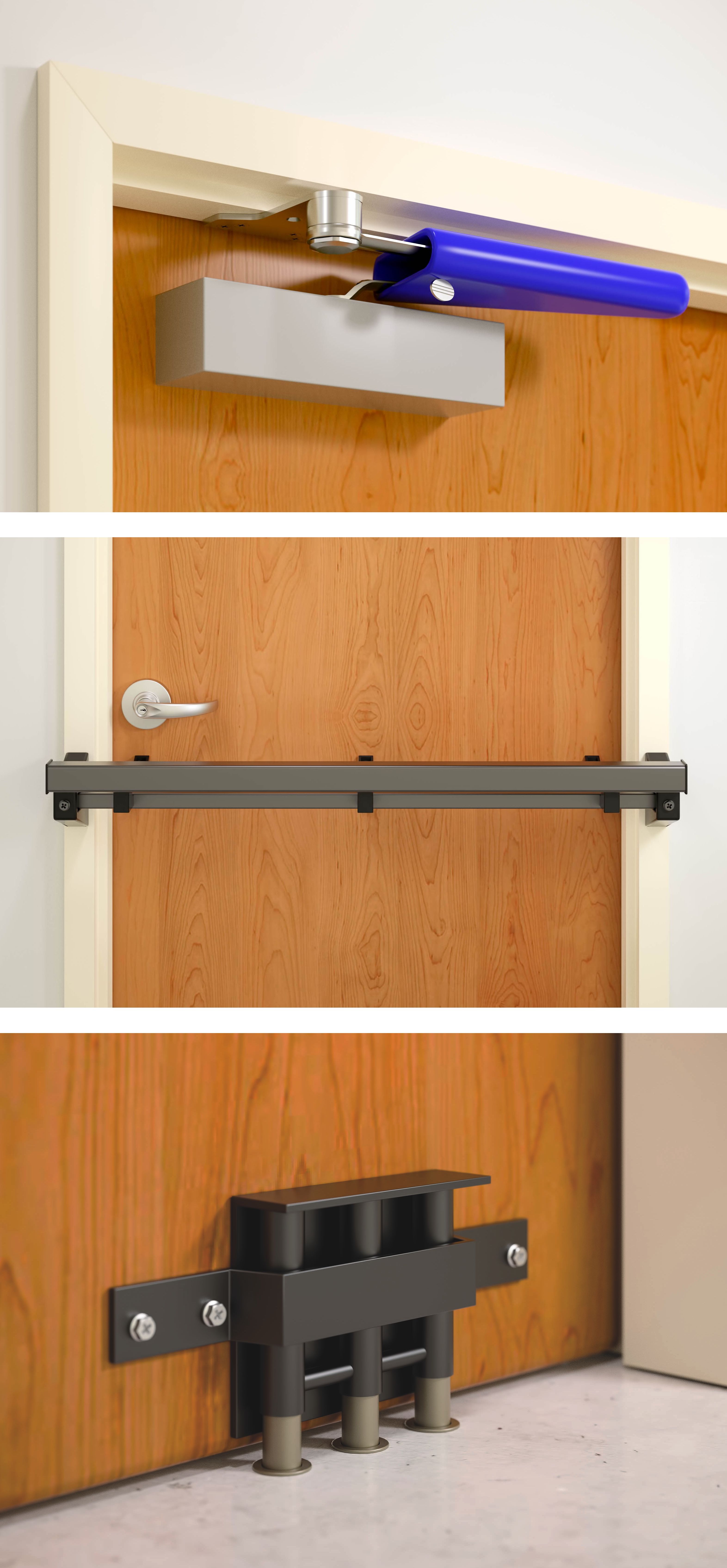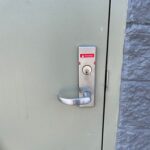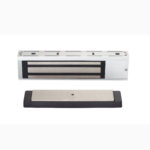
These images created by a graphic artist illustrate devices that are not compliant with model codes such as the International Building Code (IBC), International Fire Code (IFC), and NFPA 101 – The Life Safety Code.
A few weeks ago, someone asked me to post a list of security devices that do not comply with the model codes, and explain why they are not compliant. While I can’t mention specific devices or include actual product photos, I am posting this refresher in honor of Safe Schools Week.
When you are evaluating a security method to determine whether it is compliant with the model codes, here are the 4 questions to ask yourself:
- Does the door unlatch with one operation? Keep in mind that the question is not whether each security device unlatches with one operation – one operation must unlatch the door completely. If the door has a traditional lockset or latchset on it, adding another security device will often mean that the door does not unlatch with one operation. There are some exceptions where a retrofit security product is unlatched by turning the lever on the existing door hardware – this application would typically meet the unlatching requirements.
- Can the door be opened for egress without a key, tool, special knowledge, or effort, and without tight grasping, pinching, or twisting of the wrist? When it’s time to exit, a building occupant must be able to open the door without wasting valuable time trying to find a key or remove a security device that is not intuitive. In addition, the hardware must be operable with one hand, without simultaneous operations. The field test used by many code officials to determine compliance with the accessibility standards is whether the hardware can be operated with the side of a palm.
- Is the releasing hardware mounted between 34 inches and 48 inches above the floor, or in the location required by the state or local codes? This requirement ensures that all building occupants – including children, and people using wheelchairs – can operate the hardware for egress. Although there is an exception in the IBC for locks used only for security purposes, the same exception does not exist in the accessibility standards or in NFPA 101. Security devices which bolt into the floor or attach to the door closer are outside of the allowable reach range. Note that California requires operable hardware to be mounted between 34 inches and 44 inches above the floor, which is more restrictive than the model code requirements.
- Can the door be unlocked from the outside with a key, credential, or other approved means? This is a requirement of the 2018 model codes, so technically it does not apply in all states (yet). However, it is critical for school staff and emergency responders to have access to classrooms from the outside, in case an unauthorized person secures the door. After past incidents of barricading in schools, law enforcement recounted the problems they had accessing the room, and the possible effect on the outcome. While some security devices are designed to be released by inserting a special tool under the door, the releasing method must be approved by the code official.
Although there are some states and local jurisdictions that have adopted less stringent requirements, the model code requirements listed above do apply in the vast majority of US states. There are many code-compliant locksets available that provide the necessary level of security. Removal of security devices that are not compliant with the adopted codes may be ordered by the Authority Having Jurisdiction.
~~~
A message for Safe Schools Week from Allegion president of the Americas region, Tim Eckersley:
You need to login or register to bookmark/favorite this content.






What I think of it, LOCK, DONT BLOCK!
Not yet have i heard a gunman shooting the lockset off the door, that only happens in the movies.
Update: not heard a peep from any of them closer arm based barricade devices, I guess they have finally figured out that many schools are banning them or not many can reach the closer arm to deploy the device,
Another one I say when people talk about the closer arm type devices, not all closers are made or installed alike, different types of arms and using the device just gives false sense of security and gambling with your life with a skinny cheap closer arm that is not designed to withstand the forces experianced by binding the arm.
Lori: keep up the good work with making the public aware of the do’s and don’ts of classsroom door security!